Navigating Geological Contrasts: Strategies for Sustainable Agriculture in Tanzania
Tanzania exhibits highly contrasting geology, which plays a crucial role in its strengths and limitations for agricultural development. Certain areas of the region contain abundant minerals for fertile soils while others suffer from depletion. This disparity arises largely from the region’s unique geomorphological features, notably its location along the East African Rift System (EARS). The EARS is an extensive continental rift valley beginning at the Red Sea in the north, and extending eastward into the Indian Ocean (Wood & Turn). The rift is actively forming through extensional tectonics, a process that pulls apart the Earth’s crust, thinning it. Within the Rift Valley, there is a mixture of continental and volcanic rock, along with an accumulation of minerals and elements in various sections. Two branches of this rift system extend into Tanzania, creating mineral-rich highlands that contain key elements for cultivating nutrient dense crops.
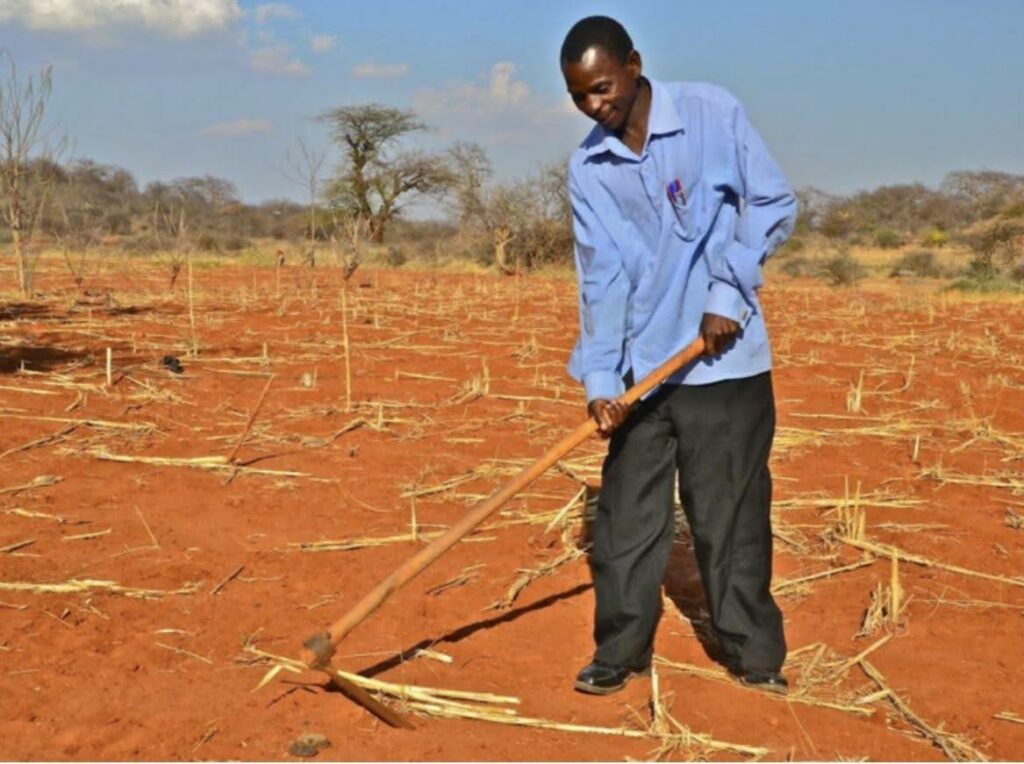
In contrast, the central plateau of Tanzania is marked by heavily weathered and mineral-depleted soils, a consequence of the ancient granitic Tanzanian Craton. The craton is composed of dense archean granite and greenstone rock assemblages (Straaten 2002 page 290). The EARS branches into two as it navigates around the craton. This divergence prevented the same mineral advantage of the rift valley regions from becoming available to central Tanzania (Wood & Turn). This ancient formation also plays a crucial role in the infertile soil that covers its surface. Top soil on the central plateau has been exposed to the elements for long periods of time, and the region experiences little geologic deformation and mineral renewal. As a result, these soils have lower natural nutrient levels, high acidity levels, and are largely devoid of accumulated organic matter (Jerden 2023b)
David Paul Blessing, President of Engineers Without Borders-Tanzania (EWB-Tanzania), and his team strive to utilize the nutrient rich minerals of the highlands to remineralize Tanzanian agricultural zones suffering from soil infertility. A locally sourced agromixture named Rutubisha, or “remineralize” in Swahili, was created to fulfill this objective. Rutubisha is a formulated rock dust compound sourced from the mineral rich regions of Tanzania. It includes alkaline volcanic rocks from the Manyara and Mbeya regions, mica and feldspar from the Morogoro region, and calcite lime from Tanga limestone. Keeping the sourcing of the individual components of Rutubisha local to Tanzania allows EWB-Tanzania to create an independent and sustainable long term strategy for agricultural and environmental security.
Alkaline Volcanics of Manyara and Mbeya
Soil remineralization harnesses the natural weathering of rocks and minerals to release plant nutrients into the soil. As different rock types dissolve, they release a diverse array of minerals, each contributing distinct elements. Basalt and nephelinites are the two alkaline volcanic source materials identified for use in the Rutubisha mixture. Basalt stands out as a prime source of essential elements due to its rich mineral composition and alkaline quality. Nephelinites are similar to basalt, being volcanic and alkaline, but contain a different spectrum of minerals. To understand the value of these materials, Engineers without Borders conducted a nutrient analysis on both the alkaline basalt and volcanic nephelinites, allowing the team to determine the materials that would work best in the agromineral mixture.
The table below quantifies the calcium, magnesium, potassium, phosphorus, zinc, nickel, copper, and boron within both samples (Jerden 2023 page 4).
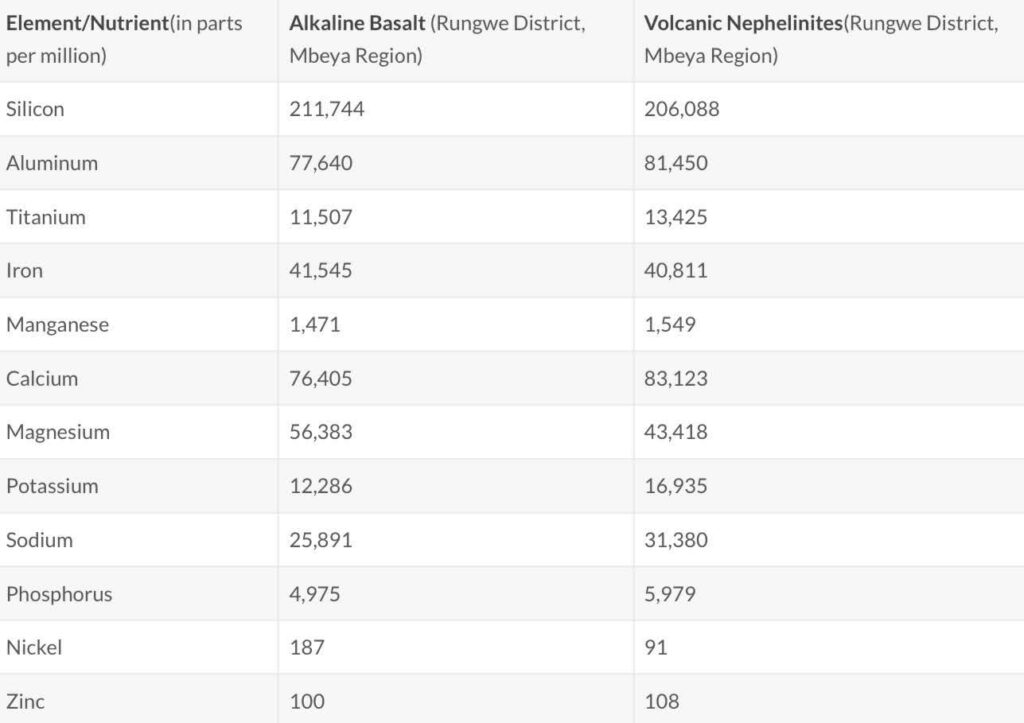
Potassium, calcium, and phosphate are common components of chemical fertilizers. However, in rock dust, they exist in a slow-release form instead of highly soluble salts. This enables plants and microbes to secrete enzymes, which break down the rock and extract only the necessary nutrients. As a result, runoff water pollution caused by excess fertilizing components is reduced.
High soil acidity is a major concern within many Tanzanian agricultural zones. When soil pH levels are unbalanced, fertilizers are less effective. Previous studies have demonstrated that the dissolution of basalt neutralizes the pH of acidic soil, facilitating the absorption of essential nutrients by both the soil and plants. Further benefits of incorporating basalt include reducing aluminum levels, providing silicon for uptake into plant cells, promoting the growth of beneficial microbes and enhancing natural nitrogen fixation (Campe 2014 pgs 5, 9, 89). Basalt is abundant in the volcanic rock-bearing regions of Tanzania, making its inclusion in the mixture practical. Two source locations, Manyara and Mbeya, were selected for collecting basalt and alkaline volcanics due to their historical eruptions and present geomorphology.
Mount Kilimanjaro is the major geologic feature that comes to mind when considering volcanic material in Tanzania. Manayara lies just south of Kilimanjaro, providing close proximity to an abundance of volcanic material. In geologic terms, this region experienced recent volcanic activity with lava flows occurring only 400,000 to 200,000 years ago. This volcanic activity produced the Kilimanjaro lava flows, present now as solidified units of basalt. Lahars also distributed pyroclastic materials such as ash and a wide variety of rocky debris to the area. This slurry of material provides a wide variety of essential plant nutrient elements such as calcium, magnesium, potassium and phosphorus and contain a wealth of beneficial trace elements (Jerden & Ortlieb 2023).
After evaluating multiple sites, EWB-Tanzania selected the Himo Quarry as the source of alkaline volcanic material for Rutubisha. It is located on the lower southern slopes of the Kilimanjaro volcanic province and was positively identified as a viable source for high quality basaltic rock. Its location also presents a logistical advantage due to its proximity to the road, processing facility, and trial sites (Jerden & Ortlieb 2023). Additional locations around the Kilimanjaro foothills are under evaluation as potential supplemental basalt retrieval sites.
The first batch of Rutubisha was created in May 2023 with the goal of solving the logistical challenges that made earlier attempts at producing an agro mixture product, like Rutubisha, impractical. Basalt was sourced along the foothills and the Miwaleni Springs community was chosen to house the processing and packaging facility. Remineralize the Earth (RTE) and EWB Tanzania developed a formula for the initial batches of Rutubisha consisting of 20 kilograms of basaltic rock dust, 2.5 kilograms of biochar, and 2.5 kilograms of compost manure. Trials with this pilot mix are currently underway in farming communities near Miwaleni Springs, Moshi. Future batches of Rutubisha can be customized to suit the unique needs of different soil types.
Mbeya is located in the South western region of Tanzania. It is situated in the western branch of the East African Rift System (EARS) and intersects with three rift basins. The rift basins are filled with a wide variety of deposits including volcaniclastic sediments and volcanic rocks due to the kinematic rifting history of this region. The fault scarps in this area also contain hardened basaltic lava, scoria and pumice from the Kiejo Caldera. These materials now overlie a 550,000 year-old basaltic flow that has been dissected by recent erosion (Delvaux et al.). More basalt and volcanic material used for Rutubisha are sourced from the Usangu mountain range. These mountains are actually scarps that line the Usangu basin. This basin hosts numerous volcanic centers and ancient lava flows. Additionally, it is located near Rungwe volcano, which erupted as recently as 1,200 years ago (Smithsonian Institution). Basaltic rocks are also collected along the Dar Es Salaam to Zambia tarmac road, named the Tanzam Highway.
Mica and Feldspar from the Morogoro Region
It is crucial to incorporate a source of potassium into the Rutubisha mixture to support the nutrient requirements of crops entirely. Potassium plays a vital role in almost all processes necessary for sustaining plant growth and reproduction. It activates enzymes, regulates water balance within plant cells, guides leaf orientation towards light, transports organic compounds, and bolsters plant resilience against diseases. Additionally, potassium influences quality attributes such as size, shape, color, and vigor of seeds or grains (Straaten 2004).
Plants absorb a lot of potassium to fulfill all of these processes. Potassium-deficient plants exhibit reduced resilience to drought, excess water, and extreme temperatures, along with heightened vulnerability to pests, diseases, and premature defoliation of the crop (The Mosaic Company 2024). Potash, a commonly used fertilizer to enrich soils with potassium, contains various water-soluble salts. The vast majority of agricultural potash is sourced from a handful of countries including Canada, Russia, Belarus, and China. This leaves the price of potash vulnerable to shocks in the geopolitical realm, as demonstrated when Russia invaded Ukraine in early 2022. The price of potash jumped by 53% before returning to 2021 levels nearly a year after the onset of hostilities (Kee et al. 2023). Potash is currently sold for $289 per ton, with a current high of $875 per ton (YCharts n.d.). This is not a stable and cost effective source of potassium for farmers in Tanzania.
In search of a sustainable alternative, the naturally occurring potassium within phlogopite and potassium feldspars were selected. Phlogopite is a micaceous mineral that several agricultural studies have determined is a good source of soluble potassium. Phlogopite contains around 10% potassium and is a good match for the acidic soils in Tanzania. The acids can improve the weathering of the mineral and make the potassium release three times easier than in water (Centro de Tecnologia Mineral 2008). In 2017, a pot trial involving leeks was carried out, utilizing phlogopite mica and a >90% potassium feldspar (K-Feldspar) as the sole sources of potassium, while the remaining soil consisted of pure sand. The leeks received adequate potassium for growth, demonstrating that the potassium derived from the rock powders was sufficient and accessible to the plant (Swoboda 2021).
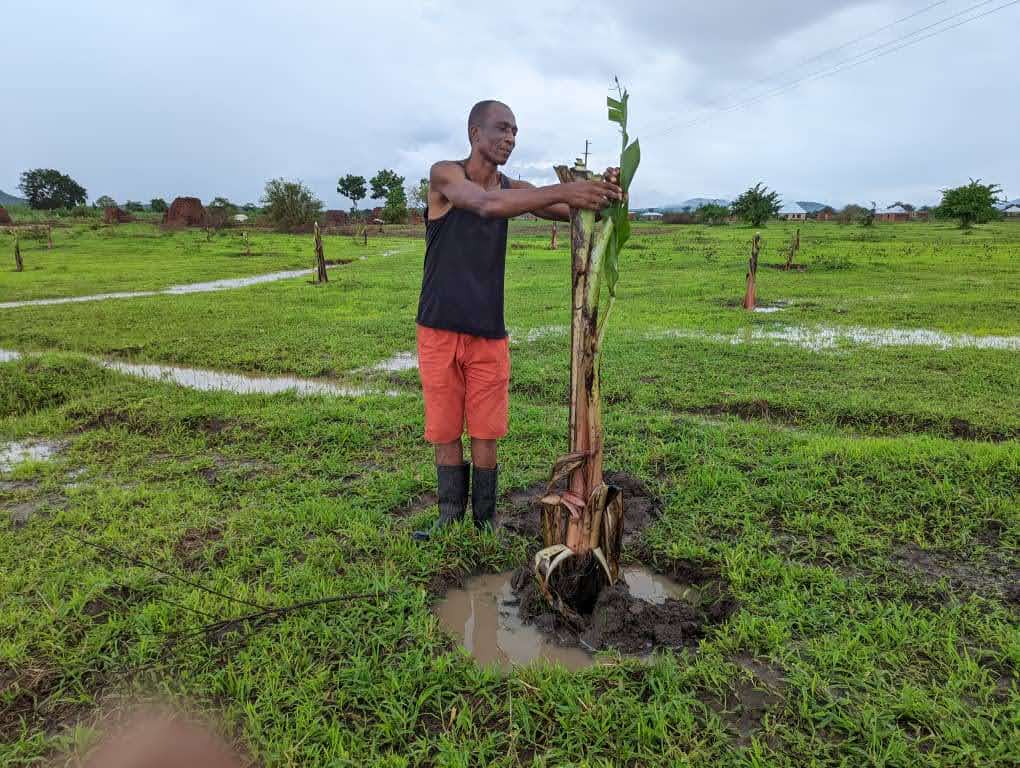
The potassium components of Rutubisha, phlogopite and K-Feldspars, can be found in pegmatites from the Uluguru mountains in western Tanzania near Morogoro. The Uluguru mountains, which formed about 100 million years ago, are part of the Eastern Arc Mountains in Eastern Africa. They extend from the Taita Hills in southeastern Kenya to the Udzungwa Mountains in Tanzania (Burgess et al.). Primarily block-fault mountains, their formation involves periods of uplift followed by prolonged stability and erosion. Fault-block mountains like these arise from tectonic forces pulling the earth’s crust apart, creating fractures and faults where tension is greatest (Bracebridge et al. 2005). While the Eastern Arc Mountains are a direct result from the extensional tectonic forces of the East African rift zone, the Uluguru mountains are composed mostly of Precambrian igneous and metamorphic rocks. Within these lithologies are the phlogopite and K-feldspar rich pegmatites that will be obtained for the rock dust mixture.
In Spring 2023, a fundraising event was held to support trials with farming communities near Miwaleni Springs in the Kilimanjaro region. These funds, along with grants from RTE, empowered EWB-Tanzania to expand to additional communities in the Moshi District and across the Morogoro region. The images above depict two different sites in Morogoro where Rutubisha is being implemented. Small-scale farmers in these areas received both complimentary bags of Rutubisha and training sessions (Campe 2023).
Calcite Lime from the Tanga Region
To further balance the acidity of soils in Tanzanian farmland, carbonate material is added into the Rutubisha mixture. A healthy soil pH increases both short-term and long-term soil productivity. The carbonate rock limestone is a material long used in agriculture for managing soil acidity. Limestone is composed of the minerals calcite and aragonite, which are crystalline forms of calcium carbonate. When crushed and processed into a powder, this material is called agricultural lime, or “ag lime”. Ag lime is primarily used to raise the pH of acidic soils and diminish the presence of aluminum in the soil solution. Poor crop growth in acidic soils is mainly due to excessive soluble aluminum, which is highly toxic to the root systems of many crops. Lime reduces soluble aluminum through two reactions:
CaCO3 + H2OICa2+ + 2OH− + CO2
Al3 + [soluble] + 3OH – IAl(OH)3 [insoluble]
Ag lime dissolves and releases a base that raises the pH of acidic soils, providing an environment for crops to develop healthy roots. Healthier root systems make crops more drought resistant, which is important for farms located in central Tanzania. Additionally, ag lime supplies valuable calcium and magnesium for plant nutrition (The Mosaic Company 2024).
When selecting a liming source material, there are several limestone options to consider, such as sedimentary bedded, dolomitic limestone, calcitic dolomite, and dolomite. While calcium carbonate is the main active component, additional mineral nutrients and solubility levels differ depending on rock source. Coral limestone and other sedimentary limestones often contain aragonite as a form of calcium carbonate, which is slightly more soluble than calcite. Conversely, more crystalline forms like dolomite are less soluble and more challenging to grind into a fine powder. An added advantage of using limestone in Tanzania specifically, is its increased solubility in acidic soils compared to neutral or alkaline soils. This enhances the solubility of any chosen liming agent for Rutubisha. Farmers favor sedimentary limestones and coral limestones over more crystalline metamorphosed limestones, as they require less energy to grind into dust. Less energy requirements result in lower production costs. Additionally, smaller grain sizes offer greater agricultural efficacy (Straaten 2002).
Tanga is a coastal region in the north eastern corner of Tanzania. Its coastal geomorphology forms the Tanga Basin, another structure resulting from the EARS. This basin is the result of long-term subsidence through multiple tectonic rifting and continental drifting plate tectonics which opened a space for infilling by sediments. Clastic sediments rapidly filled the basin creating sequences of parallel stratification. The basement of the Tanga Basin includes sedimentary materials of dolomitic limestones and dolomitic marbles which are overlain by layers of siltstones, sandstones, and conglomerates. Due to the tectonic activity of this region, there are brittle deformations, such as faults, that expose the carbonate basement above the overlying layers. Most geologic records of the Tanga Basin mention crystalline limestones, but some maps also indicate the presence of coral limestones (Mvile et al. 2020). Although both are suitable sources for liming material, the less dense limestone would be more preferable, as it requires less energy to reduce the grain size.
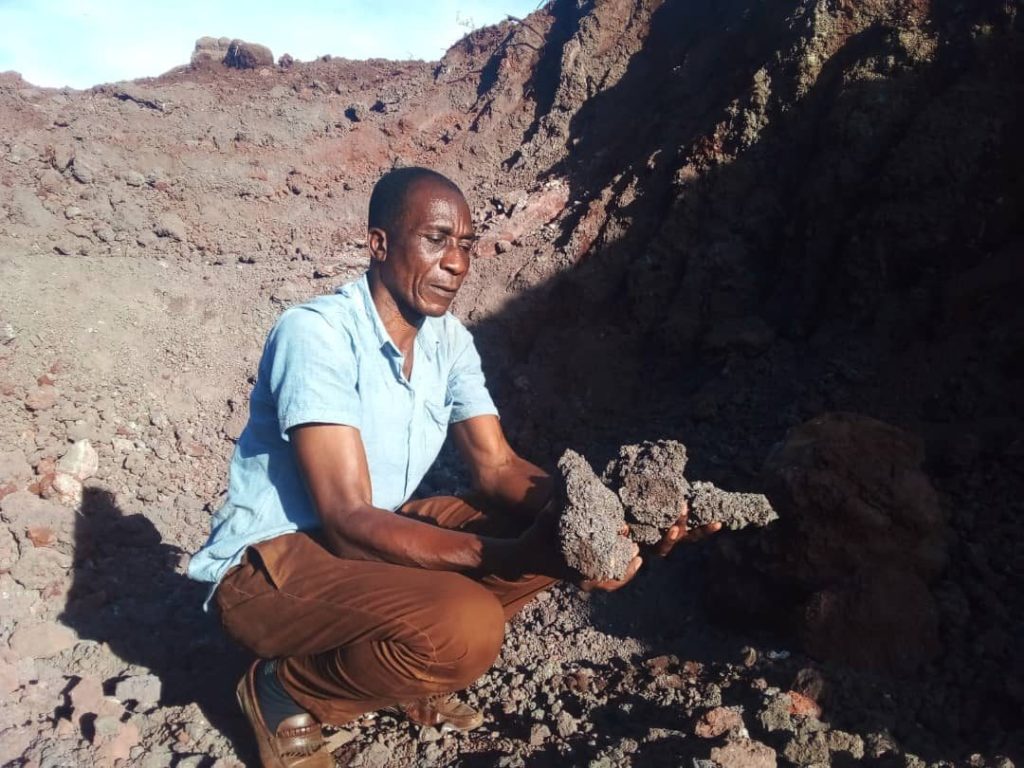
The limestone collected for the Rutubisha mineral mixture is found in Handeni, one of 11 districts within Tanga. It is located about 327 kilometers from Moshi, where Rutubisha production facilities and trial locations are located. Handeni also lies along the eastern segment of the EARS. This segment happens to be part of the Pan-African Mozambique Orogenic Belt. The Mozambique Belt formed during the Pan-African orogeny when Gondwana was formed. It stretches from East Antarctica through East Africa to the Arabian-Nubian Shield, and marks the site where the Proterozoic supercontinents collided and dispersed (Muhongo 1999). Exposed rocks in the Tanzanian section include rift sediments and reworked crust material from the Tanzanian craton.
Handeni is most famous for its gold mines. As such, the majority of geologic information available on Handeni is focused on gold and its surrounding high grade metamorphic rocks. However, the University of Dar es Salaam conducted a study using various remote sensing data that created a more complete geologic map of the region (Magigita et al. 2024). Their findings found the high grade re-worked metamorphics that other articles reported, but were also able to delineate the location of carbonates such as crystalline marble and limestone. The appearances of carbonate beds are most likely due to the deformation caused by this area being along the eastern segment of the EARS.
David Paul Blessing of EWB-Tanzania found the quality of the limestone in Handeni to be an ideal carbonate material for inclusion in the Rutubisha mixture. The sediment is fine and soft, requiring only sieving instead of heavy-duty rock crushing, which reduces costs associated with producing rock dust. The lime from Handeni also has a high CaCO3 level of 88.63% as well as a CaO level of 48.54%, which adds to both the efficiency of the material and its carbon capture potential.
Conclusion
The geology of Tanzania exhibits significant variation, providing both opportunities and challenges for its agricultural development. Engineers Without Borders Tanzania has taken substantial steps to tackle soil infertility in Tanzania. They developed the agro mixture Rutubisha composed of locally sourced materials from nutrient-rich areas to help rejuvenate soils in depleted regions. Its key ingredients are sourced from different regions, focusing on basalt, mica, feldspar, and calcite lime.
Basalt, sourced from the Kilimanjaro region, provides essential minerals like potassium, calcium, and magnesium, which are crucial for soil and plant health. Mica and feldspar from the Morogoro region contribute potassium, which plays a vital role in plant growth and resilience. Calcite lime from Tanga balances soil pH, reducing acidity and improving nutrient uptake.
Rutubisha’s localized sourcing strategy not only reduces logistical costs but also creates a sustainable method for soil remineralization. The ongoing trials with this mixture aim to demonstrate its effectiveness in revitalizing infertile soils, offering a practical solution for Tanzanian agriculture. Sourcing from three local areas rich in essential materials ensures that Rutubisha can be produced as a sustainable fertilizer. This provides a variety of nutrients, allowing for a broader range of soil benefits and enhancing the effectiveness of the final product.
Anna Himelstein is a graduate in Geology and GIS from West Virginia University. For the past two years she has been solo traveling across many countries. Her route has taken her to India, Nepal, Sri Lanka, Egypt, Jordan, Mexico, Georgia, Eastern Europe, and many more. Along the way she volunteered for several organic farms, learning how people around the world approach agriculture and life. Inspired by the places she’s been and the knowledge of strong communities, she’s now returning to the United States with a drive to support local connection to agriculture, community, and the earth. Though her primary focus is on geological research, she is keen to learn from the various disciplines that contribute to sustainability and agriculture. She began as a science writer for Remineralize the Earth in 2024, inspired by the team’s natural approach to enriching agricultural soils. She’s also a ceramicist, with studio spaces in Utah and an artist residency in Austria.
Citations
- Bracebridge, Fanning C., et al. “Uluguru Component Biodiversity Survey 2005(Vol. 1).” Frontier-Tanzania University of Dar es Salaam Society for Environmental Exploration, 2005, https://www.easternarc.or.tz/wp-content/uploads/2020/03/UCBS-Methods-Manual-volume-I-2005.pdf. Accessed 8 July 2024.
- Burgess, Neil, et al. “The Uluguru Mountains of eastern Tanzania: the effect of forest loss on biodiversity.” Oryx, vol. 36, no. 2, 2002, pp. 140–152. Cambridge University Press, https://www.cambridge.org/core/journals/oryx/article/uluguru-mountains-of-eastern-tanzania-the-effect-of-forest-loss-on-biodiversity/9FF998D47C0706D95234E1C8B73A277A. Accessed 4 June 2024.
- Campe, Joanna. “New Campaign Supporting Project to Address Food Insecurity in Tanzania.” Remineralize the Earth, 29 October 2023, https://www.remineralize.org/2023/10/new-campaign-addressing-food-insecurity-in-tanzania/. Accessed 4 June 2024.
- Campe, Joanna. “Potential of Remineralization as a Global Movement.” Geotherapy: Innovative Methods of Soil Fertility Restoration, Carbon Sequestration, and Reversing CO2 Increase, edited by Thomas J. Goreau, et al., Taylor & Francis Group, 2014, pp. 81-110, https://www.taylorfrancis.com/books/edit/10.1201/b13788/geotherapy-joanna-campe-ronal-larson-thomas-goreau. Accessed 3 July 2024.
- Patskowski, Debra, Joanna Campe, Meteb Mejbel, and Dr. Antonio Nilson Zamunér Filho. Remineralization for a Healthy Planet. 19 July 2022. RTE White Paper: Remineralization for a Healthy Planet, Northampton, Remineralize the Earth, https://www.remineralize.org/wp-content/uploads/2022/08/RTE-Remineralization-for-a-Healthy-Planet.pdf. Accessed 3 July 2024.
- Charts. “Potassium Chloride (Muriate of Potash) Spot Price Monthly Insights: Commodity Markets Review.” YCharts, https://ycharts.com/indicators/potassium_chloride_muriate_of_potash_spot_price. Accessed 4 June 2024.
- da Silva, Adriana de A. S., et al. “A STUDY ON APPLICATION OF PHLOGOPITITE AS A SLOW RELEASE POTASSIUM FERTILIZER.” Centro de Tecnologia Mineral, https://www.cetem.gov.br/antigo/images/congressos/2008/CAC01430008.pdf. Accessed 8 July 2024.
- Delvaux, D. F., and M. Hanon. “NEOTECTONICS OF THE MBEYA AREA, SW TANZANIA.” Royal Museum for Central Africa, Department o f Geology and Mineralogy, 1993, pp. 87-97, https://www.africamuseum.be/publication_docs/1993_Delvaux-Hanon_Neotectonics-Mbeya.pdf. Accessed 8 July 2024.
- Gatiboni, Luke, and David Hardy. “Soil Acidity and Liming: Basic Information for Farmers and Gardeners | NC State Extension Publications.” NC State Extension Publications, https://content.ces.ncsu.edu/soil-acidity-and-liming-basic-information-for-farmers-and-gardeners. Accessed 4 June 2024.
- Jerden, James. “Crash Course on Enhanced Rock Weathering for Carbon Removal.” Remineralize the Earth, Remineralize the Earth, 29 January 2023, https://www.remineralize.org/2023/01/crash-course-on-enhanced-rock-weathering-for-carbon-removal/. Accessed 4 June 2024.
- Jerden, James. “Engineers Without Borders is Addressing Food Security in Tanzania.” Remineralize the Earth, Remineralize the Earth, 26 February 2023, https://www.remineralize.org/2023/02/engineers-without-borders-is-addressing-food-security-in-tanzania/. Accessed 4 June 2024.
- Jerden, James, and Angela Ortlieb. “Restoring Soils in Kilimanjaro – Engineers Without Borders Seeks Funding to Fight Food Insecurity in Tanzania.” Remineralize the Earth, 15 May 2023, https://www.remineralize.org/2023/05/restoring-soils-in-kilimanjaro-engineers-without-borders-seeks-funding-to-fight-food-insecurity-in-tanzania/. Accessed 4 June 2024.
- Kee, Jennifer, et al. “Global Fertilizer Market Challenged by Russia’s Invasion of Ukraine.” USDA ERS, 18 September 2023, https://www.ers.usda.gov/amber-waves/2023/september/global-fertilizer-market-challenged-by-russia-s-invasion-of-ukraine/. Accessed 8 July 2024.
- Magigita, Masota M., et al. “Application of Remote Sensing and Spectroradiometry in Geological Mapping: a case study of Handeni (QDS 148) Block, Eastern Mozambique Belt, Tanzania | Tanzania Journal of Science.” African Journals Online, 31 January 2024, https://www.ajol.info/index.php/tjs/article/view/263889. Accessed 12 July 2024.
- Mosaic. “Calcium Carbonate (Limestone) | Mosaic Crop Nutrition.” Crop Nutrition, https://www.cropnutrition.com/resource-library/calcium-carbonate-limestone/. Accessed 4 June 2024.
- Muhongo, Sospeter. “Anatomy of the Mozambique Belt of Eastern and Southern Africa: Evidence from Tanzania.” Gondwana Research, vol. 2, no. 3, 1999, pp. 369-375, https://www.sciencedirect.com/science/article/abs/pii/S1342937X05702768?via%3Dihub. Accessed 12 July 2024.
- Mvile, Benatus N., et al. “An overview of the geology of Tanga onshore basin: implication for hydrocarbon potential, Tanzania, East Africa.” Journal of Sedimentary Environments, vol. 5, no. 3, 2020, pp. 267-277, https://doi.org/10.1007/s43217-020-00021-8. Accessed 4 June 2024.
- Obialor, C. A., et al. “Origin, Structure And Associated Mineral Resources Of East African Rift System: An Overview.” World Journal of Engineering and Technology Research, vol. 8, no. 1, 2022, pp. 1-23. World Journal of Engineering and Technology Research, https://doi.org/10.53346/wjetr. Accessed 4 June 2024.
- Patskowski, Debra, et al. “Remineralization for a Healthy Planet.” Remineralize the Earth, 19 July 2022, https://www.remineralize.org/wp-content/uploads/2022/08/RTE-Remineralization-for-a-Healthy-Planet.pdf. Accessed 4 June 2024.
- Swoboda, Philipp, et al. “Remineralizing soils? The agricultural usage of silicate rock powders: A review.” Science of The Total Environment, vol. 807, no. 3, 2022, https://www.sciencedirect.com/science/article/pii/S004896972106054X?via%3Dihub. Accessed 8 July 2024.
- Van Straaten, Peter. Rocks for Crops: Agrominerals of Sub-Saharan Africa. Nairobi, ICRAF, 2002, https://apps.worldagroforestry.org/Units/Library/Books/PDFs/11_Rocks_for_crops.pdf. Accessed 3 July 2024.
- Wood, James, and Alex Guth. “East Africa’s Great Rift Valley: A Complex Rift System.” Geology.com, https://geology.com/articles/east-africa-rift.shtml. Accessed 4 June 2024.YCharts. “Potassium Chloride (Muriate of Potash) Spot Price Monthly Insights: Commodity Markets Review.” YCharts, https://ycharts.com/indicators/potassium_chloride_muriate_of_potash_spot_price. Accessed 8 July 2024.
Support us on Patreon
Thank you for joining us today! Please become a member of RTE and support us on Patreon. Unlike many larger organizations, we work with a team of determined and passionate volunteers to get our message out. We aim to continue to increase the awareness of remineralization to initiate projects across the globe that remineralize soils, grow nutrient dense food, regenerate our forests’ and stabilize the climate – with your help! If you can, please support us on a monthly basis from just $2, rest assured that you are making a big impact every single month in support of our mission. Thank you!

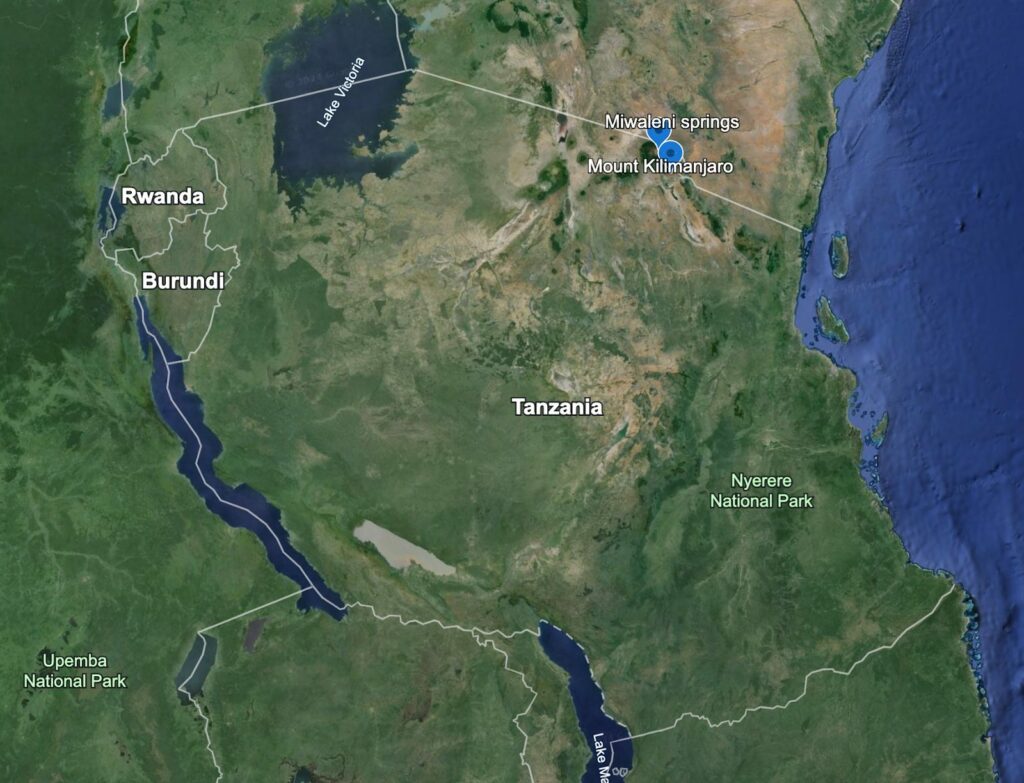
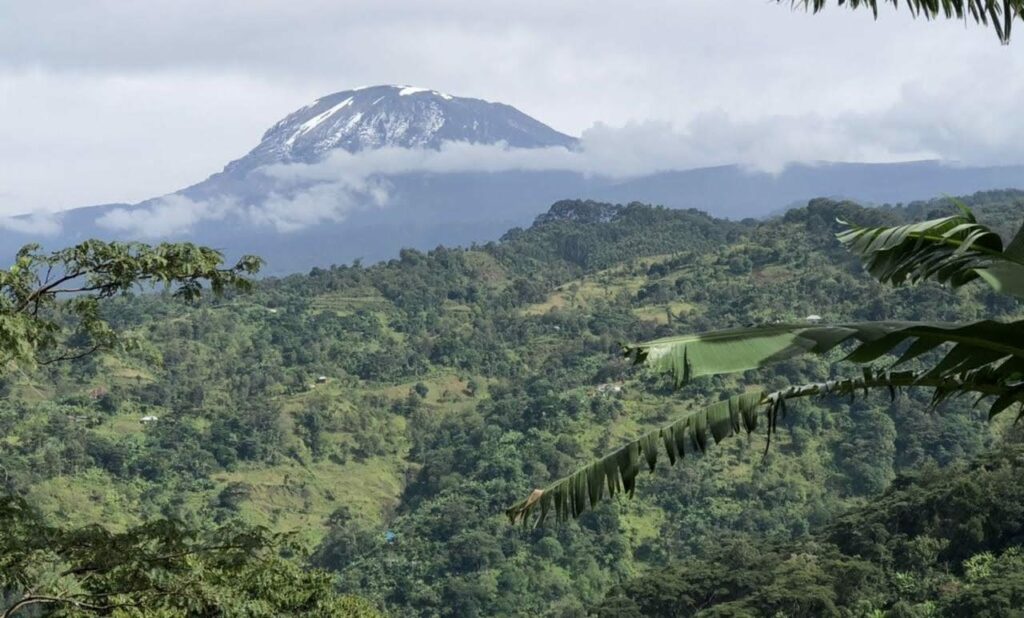
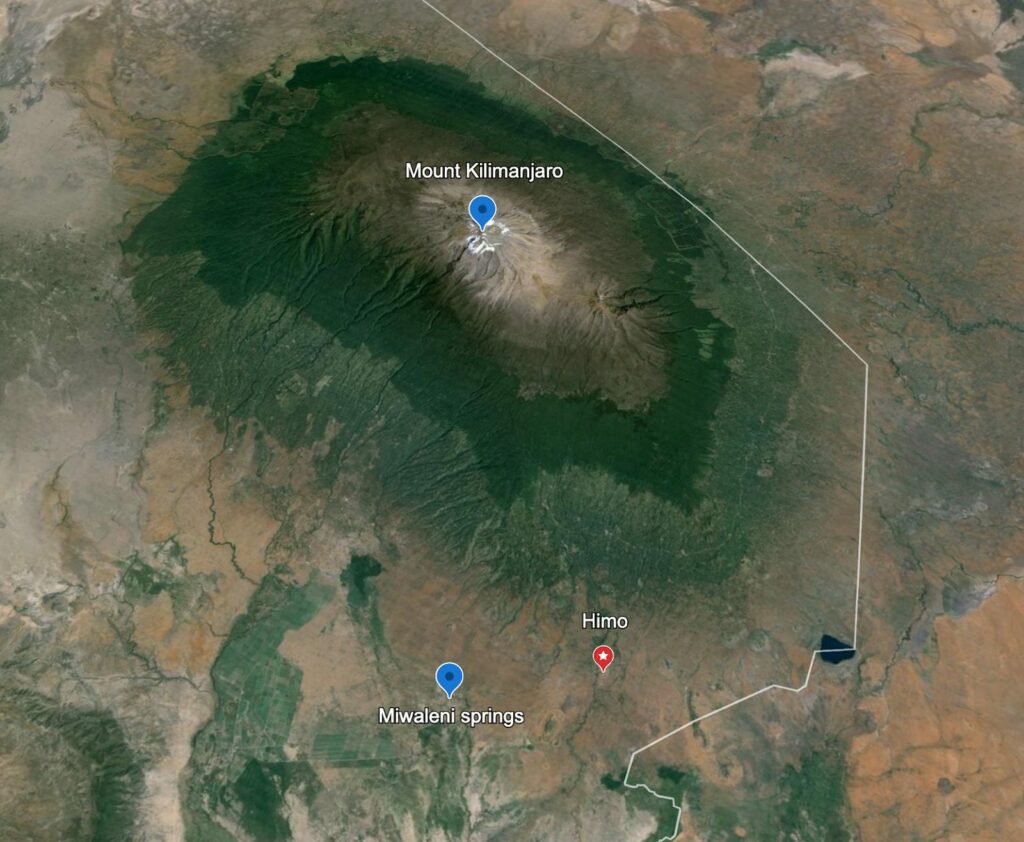
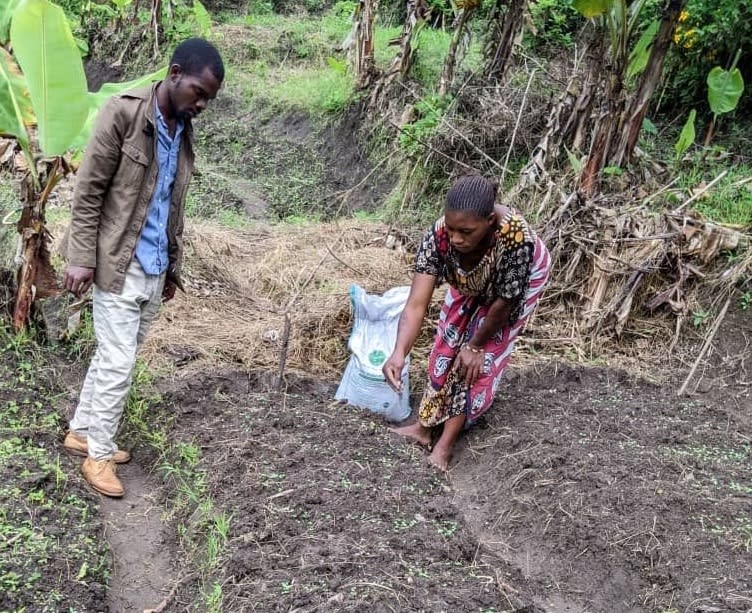






Got something to say?